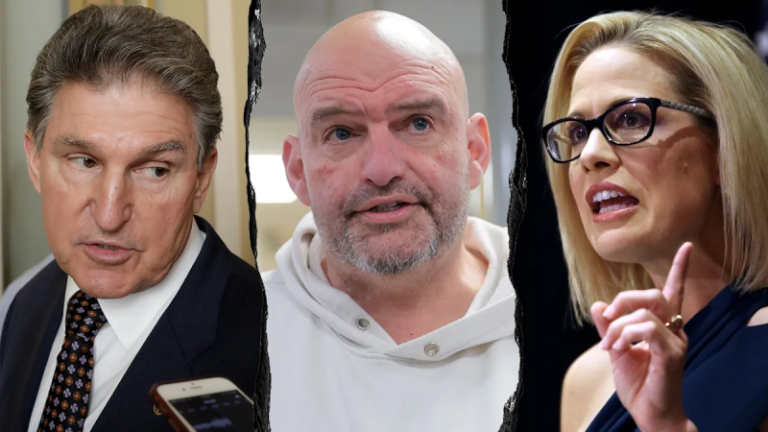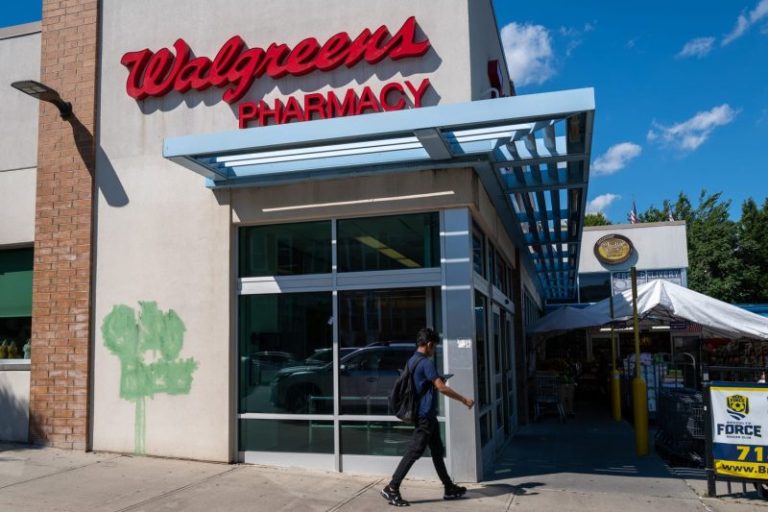As struggling drugstore chains work to regain their footing, Walgreens is doubling down on automation.
The company is expanding the number of retail stores served by its micro-fulfillment centers, which use robots to fill thousands of prescriptions for patients who take medications to manage or treat diabetes, high blood pressure and other conditions.
Walgreens aims to free up time for pharmacy staff, reducing their routine tasks and eliminating inventory waste. Fewer prescription fills would allow employees to interact directly with patients and perform more clinical services such as vaccinations and testing.
Walgreens first rolled out the robot-powered centers in 2021, but paused expansion in 2023 to focus on gathering feedback and improving performance at existing sites. After more than a year of making upgrades, including new internal tools, the company said it is ready to expand the reach of that technology again.
Walgreens told CNBC it hopes to have its 11 micro-fulfillment centers serve more than 5,000 stores by the end of the year, up from 4,800 in February and 4,300 in October 2023. As of February, the centers handled 40% of the prescription volume on average at supported pharmacies, according to Walgreens.
That translates to around 16 million prescriptions filled each month across the different sites, the company said.
The renewed automation push comes as Walgreens prepares to go private in a roughly $10 billion deal with Sycamore Partners, expected to close by the end of the year.
The deal would cap a turbulent chapter for Walgreens as a public company, marked by a rocky transition out of the pandemic, declining pharmacy reimbursement rates, weaker consumer spending and fierce competition from CVS Health, Amazon and other retail giants.
Like CVS, Walgreens has shifted from opening new stores to closing hundreds of underperforming locations to shore up profits. Both companies are racing to stay relevant as online retailers lure away customers and patients increasingly opt for fast home delivery over traditional pharmacy visits.
The changes also follow mounting discontent among pharmacy staff: In 2023, nationwide walkouts spotlighted burnout and chronic understaffing, forcing chains to reexamine their operational models.
Walgreens said the investment in robotic pharmacy fills is already paying off.
To date, micro-fulfillment centers have generated approximately $500 million in savings by cutting excess inventory and boosting efficiency, said Kayla Heffington, Walgreens’ pharmacy operating model vice president. Heffington added that stores using the facilities are administering 40% more vaccines than those that aren’t.
“Right now, they’re the backbone to really help us offset some of the workload in our stores, to obviously allow more time for our pharmacists and technicians to spend time with patients,” said Rick Gates, Walgreens’ chief pharmacy officer.
“It gives us a lot more flexibility to bring down costs, to increase the care and increase speed to therapy — all those things,” he said.
Gates added that the centers give Walgreens a competitive advantage because independent pharmacies and some rivals don’t have centralized support for their stores. Still, Walmart, Albertsons and Kroger have similarly tested or are currently using their own micro-fulfillment facilities to dispense grocery items and other prescriptions.
Micro-fulfillment centers come with their own risks, such as a heavy reliance on sophisticated robotics that can cause disruptions if errors occur. But the facilities are becoming a permanent fixture in retail due to the cost savings they offer and their ability to streamline workflows, reduce the burden on employees and deliver goods to customers faster.
When a Walgreens retail pharmacy receives a prescription, the system determines whether it should be filled at that location or routed to a nearby micro-fulfillment center. Maintenance medications, or prescription drugs taken regularly to manage chronic health conditions, and refills that don’t require immediate pickup are often sent to micro-fulfillment.
At the core of each facility is a highly automated system that uses robotics, conveyor belts and barcode scanners, among other tools, to fill prescriptions. The operations are supported by a team of pharmacists pharmacy technicians and other professionals.
Instead of staff members filling prescriptions by hand at stores, pill bottles move through an automated and carefully choreographed assembly line.
Pharmacy technicians fill canisters with medications for robot pods to dispense, and pharmacists verify those canisters to make sure they are accurate. Yellow robotic arms grab a labeled prescription vial and hold it up to a canister, which precisely dispenses the specific medication for that bottle.
Certain prescriptions are filled at separate manual stations, including inhalers and birth control pill packs. Each prescription is then sorted and packaged for delivery back to retail pharmacy locations for final pickup.
There are other security and safety measures throughout the process, said Ahlam Antar, registered group supervisor of a micro-fulfillment center in Mansfield, Massachusetts.
For example, the robot pods automatically lock and signal an error with a red-orange light if a worker attaches a canister to the wrong dispenser, preventing the incorrect pills from going in a prescription, she said.
Properly training workers at the centers to ensure accuracy and patient safety is also crucial, according to Sarah Gonsalves, a senior certified pharmacy technician at the Mansfield site.
She said a core part of her role is to make sure that technicians can correctly perform the different tasks in the process.
Antar, who has worked at the Mansfield site since its 2022 opening, said Walgreens has made improvements to the micro-fulfillment process after considering feedback from stores and patients during the paused expansion. That includes establishing new roles needed to support the process at the sites, such as a training manager for all 11 locations.
The facilities also plan to transition to using smaller prescription vials after hearing concerns that the current bottles are too large, according to a Walgreens spokesperson. They said that will allow the centers to ship more prescriptions per order and reduce costs.
Heffington said the automated locations have helped reduce Walgreens’ overall prescription fulfillment costs by nearly 13% compared to a year ago.
She said Walgreens has also increased prescription volume by 126% year-over-year, now filling more than 170 million prescriptions annually. The company hopes to raise that number to 180 million or even more.
Heffington added that Walgreens implemented new internal tools to track the work across all 11 centers and provide real-time data on where a patient’s prescription is in the micro-fulfillment process.
“If a patient called the store and said, ‘Hey, can you tell me where my prescription is today?’ [Workers] can do that with great specificity,” thanks to the new tools, Heffington said.
Despite the company’s progress, Gates said there is more work to be done with micro-fulfillment centers.
For example, he pointed to the possibility of shipping prescriptions directly to patients’ doorsteps instead of putting that burden on retail stores.
“It’s only step one right now,” he said.
Other improvements may still be needed at facilities, according to some reports. For example, WRAL News reported in April that some customers at a Walgreens store in Garner, North Carolina, say they are only getting partial prescription fills, with several pills missing, or their medicine is being delayed.
A customer views merchandise for sale at a Walgreens store in the Hollywood neighborhood of Los Angeles.
Christopher Lee | Bloomberg | Getty Images
Before Brian Gange’s Arizona store started relying on an automated facility, he walked into the pharmacy every morning knowing that a massive list of prescriptions was in his work queue waiting to be filled for the day.
Now, with help from micro-fulfillment, that list is significantly smaller each day, according to Gange.
“We don’t have to spend as much time on just those repetitive fulfillment tasks,” he told CNBC. “It really takes a huge weight off our shoulders.”
Gange said that gives him and his team time to step behind the pharmacy counter and interact with customers face-to-face, answering questions, providing advice, performing health tests or administering vaccines.
That kind of attention can make all the difference for a patient.
For example, Gange recalls stepping away for five minutes to take a patient’s blood pressure despite being overwhelmed with tasks while working at a different Walgreens location several years ago. He ended up sending that person to the emergency room because their blood pressure was “off the charts.”
That patient’s wife visited the pharmacy the next day to thank Gange, saying her husband “probably wouldn’t be here with us today” without that blood pressure test.
“I shouldn’t have to question whether I have that five or 10 minutes to check a blood pressure for a patient,” Gange said. “Micro-fulfillment and centralized services are really what are going to allow us to be able to do that, to have that time.”
“That really allows us to provide better care for them,” he added.
This post appeared first on NBC NEWS





